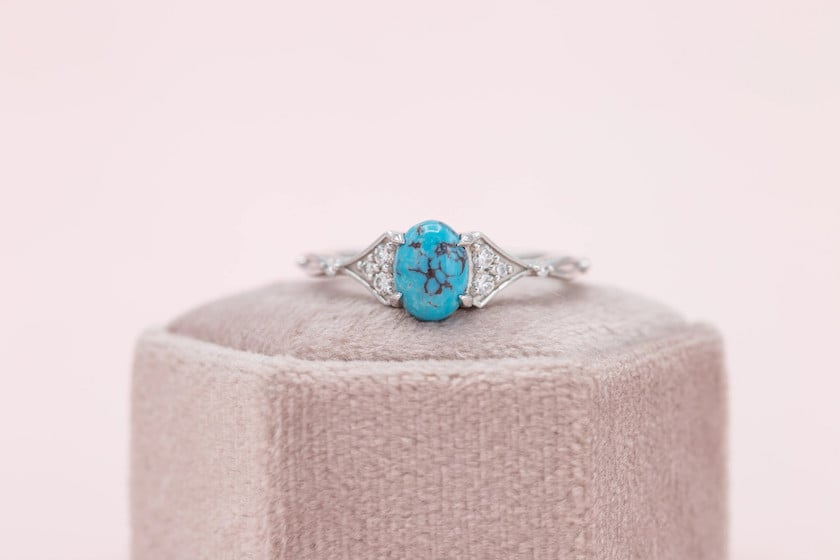Turquoise Care Guide
Beautiful turquoises tend to show wear over time. Our turquoise care guide will show you the best ways to clean and maintain your jewelry.
3 Minute Read
Why is Turquoise Soft and Porous?
Turquoises form naturally through a relatively gentle process of dissolving primary minerals into a solution containing copper, aluminum, and phosphorus. These elements bind together, often with many other impurities in the underground environment, and create many individual cryptocrystalline components. The resulting gemstone is an aggregate of many tiny parts. This is why turquoise is a relatively soft and porous gem. With a hardness of 5 to 6 on the Mohs scale, it can be scratched even by household dust, which contains quartz and has a hardness of 7.
What Causes Turquoise Discoloration?
Historically, people believed turquoise stones darkened due to a sympathetic reaction to the wearer. Indeed, turquoise wearers can inadvertently darken the stones, but this reaction is physical, not mystical. Since turquoise is made from many distinct pieces
…Emily Frontiere
Emily Frontiere is a GIA Graduate Gemologist. She is particularly experienced working with estate/antique jewelry.
International Gem Society
Related Articles
Turquoise Value, Price, and Jewelry Information
Turquoise Treatments and Synthetics Guide
Turquoise Hill: a Profile of the Cerrillos Turquoise Mines
Turquoise Symbolism
Latest Articles
800 Years of Mogok: A Celebration in Tenuous Times
What is the Average Gemstone Faceting Yield?
Pyroxmangite Value, Price, and Jewelry Information
How to Identify Emerald Simulants and Synthetics
Never Stop Learning
When you join the IGS community, you get trusted diamond & gemstone information when you need it.
Get Gemology Insights
Get started with the International Gem Society’s free guide to gemstone identification. Join our weekly newsletter & get a free copy of the Gem ID Checklist!
